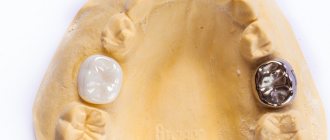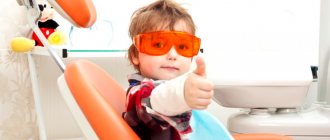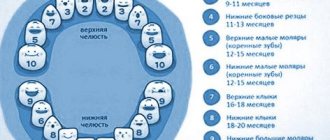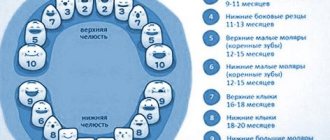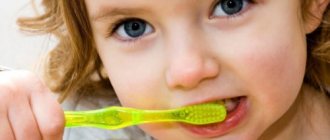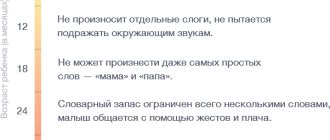Baby teeth are very important. We have more than once encountered the reaction of parents in a situation where they bring a child with advanced multiple caries. “How much will it cost to cure eight teeth? No, I won’t, because of compulsory medical insurance they will snatch everything for free.” Unfortunately, parents often do not understand that the loss (or loss) of primary teeth is very critical for the formation of a healthy orthognathic bite.
The chain is quite simple:
- The tooth was removed much earlier than the date of its replacement.
- The adjacent teeth turned and tilted to close the defect.
- The growth of the jaws has slowed down or stopped, as they depend on the chewing load.
- The permanent teeth erupted with defects, as the rudiments were damaged by infection.
- In adolescence, we have complex dental anomalies and very, very expensive orthodontic treatment that lasts for years in order to somehow correct this.
Therefore, today I will tell you what you need to do for free with your child at the start, so as not to spend a lot of money and effort on treatment in the future.
How many teeth does a child have?
teeth in a six and a half year old child.
The first chewing permanent teeth have appeared, but the incisors have not yet erupted. If you do not take supernumerary “bonus” teeth, then a person usually has 28–32 permanent teeth and 20 milk teeth. That is, at the moment shortly before the first change of teeth, a child has up to 52 teeth simultaneously in his jaw. I am still surprised when I see X-rays of the jaws of children aged six to nine years old. Sometimes there is a feeling that there are more teeth there than the jaw itself.
The skull in children has a peculiar shape. It is difficult to pass through the birth canal, the pelvis is narrow, and the head is rather large. You need to save on something so as not to get stuck along the way. You can't really save money on brains. They should immediately be sufficiently developed. As a result, evolution came to the mechanism of movable skull bones, which run over each other like tiles. The real savings in head size come from the front of the skull. Children have very small upper and lower jaws, and their teeth are in the form of tiny rudiments. This allows us to be born with minimal problems, but it also means that we need to grow these same jaws over the next few years of life. And this is where the difficulties begin.
Jaw width growth is regulated primarily by load. And this is where parents often make two important mistakes.
At first, when refusing breastfeeding, they often choose a nipple with a large hole to make it easier for the child to eat. And children are very lazy. If they understand that they can no longer pretend to be a vacuum installation, trying to eat everything that was synthesized for them in the breast, then they quickly begin to spit at the sight of a natural nipple and demand a bottle. The effort required for sucking is very great. It’s not for nothing that children have such huge cheeks because of Bisha’s fatty lumps. There is a theory that they need hamster cheeks so that the tissue can withstand the sucking process without consequences. And some brown fat to warm your head.
The second mistake occurs when the child’s first teeth appear. At this age they are very curious and try to try everything they see. Especially if one of the parents eats it in front of them. At a friend's house, a child was cracking a hefty piece of shish kebab, about 100 grams long, when the adults turned their backs. Moreover, so far there were only upper teeth. This did not bother him, and he simply removed the shavings from it, like a lathe. In general, this is a normal process. Problems begin when a child chokes on a piece of apple or carrot a couple of times. Nervous parents immediately return to pureed and crushed foods. And children are lazy, as you remember. Chewing is difficult, you have to strain. Very quickly, a one-year-old child can begin to depict his painful death from a terrible piece of pear and demand homogeneous cereals and purees.
What does the dental formula look like?
The medical record, which the big one keeps in the dental clinic at his place of residence, contains notes about his dental condition. To avoid confusion, doctors number the teeth on each side of each jaw. So, the 1st and 2nd teeth are incisors, the 3rd are canines, the 4th and 5th are small molars (doctors call molars molars), the 6th and 7th are large molars. The 8th - the farthest one - is a “wisdom tooth”; a number of people do not have it, or they do, but not all. Each side of the jaw is also numbered: 1 - top right, 2 - top left, 3 - bottom left, 4 - bottom right. For example, entry 48 does not mean that you are a “Tarkatan” with a combat superset of teeth that does not exist. You simply do not have a “wisdom tooth” on the lower right. Entry 41 - a person lost one of the frontal incisors on the same side on the same jaw. You can write down the formula of the teeth more clearly: for example, “there is no 8th tooth from the bottom right.”
It often turns out that due to lack of space on the jaw, the wisdom tooth develops incorrectly - it can grow crooked, in which case its removal is indicated. For example, it may remain under the gum and, because of this, be affected by caries, which can subsequently develop into pulpitis or a dental cyst. Problematic “wisdom teeth” are quickly and decisively removed, and their absence will not greatly affect the quality of chewing food.
Jaws don't grow because of soft food
One of the options for underdevelopment of the lower jaw. Specific “bird” profile.
The same patient. Stereolithography of the skull.
Reducing the load below the intended one leads to two very unpleasant consequences. The jaws begin to lag behind in development. As a result, lower and upper micrognathia is formed - underdevelopment of the jaws. The photos above show a very tough case. Most often this is a consequence of concomitant genetic disorders. But even on a less impressive scale, this is a wild headache for orthodontists. You can simply move and tilt individual teeth. It is almost impossible to adjust the position and size of the jaws, especially in adulthood. You will have to break bones, reshape the position of muscles, joints, tongue and much more.
No molars
The molars, despite the specific timing specified above, may ultimately not hatch. For example, temporary teeth do not fall out for a long time, and permanent teeth do not grow for a long time after they fall out. At the first stage, the dentist will take an X-ray of the condition of the child or teenager’s jaws. The X-ray machine will clearly project what should grow in place of the supposed teeth, which teeth are ready to hatch, and whether they exist at all. But the problem will immediately become obvious, and the reason for it most likely lies in the physiology of the child, which has undergone some delay. If this is true, be patient: in the end, the teeth will not take long to arrive. But if the picture shows emptiness, you are faced with a complete absence of teeth, the reason for which is a violation of the intrauterine development of the fetus during the mother’s pregnancy. Only prosthetics will help here - artificial insertion of false teeth.
Soft foods will cause tooth decay
This is the second consequence of feeding exclusively soft cereals and purees, when it is time for the child to chew solid food.
A colleague already talked about this in a post about caries. When we chew hard stems or gnaw on roots, we clean off plaque. In addition, there is a micro-massage of the gums, which improves their blood circulation and prevents the formation of tartar under the gums. The child should chew intensively and not drink instant cereals, jelly and banana puree. As a rule, if you see a child with severe multiple caries, then his diet will almost certainly consist of soft buns, cookies and all sorts of instant cereals. Well, in general, hygiene is also not very good.
When should you start brushing your child's teeth?
Now pediatric dentists are inclined to believe that systematic cleansing of a child’s oral cavity should begin... from the first days of his life. After feeding, you need to take clean gauze or a bandage, wrap it around your finger, moisten it with boiled water and rub it over the newborn’s gums. This is how you can avoid such major troubles as, for example, oral candidiasis (thrush).
Cleaning the first teeth can be done with a cotton swab or fingertip. You should start using toothpaste and brushing at 12-14 months. Almost all children's brushes are now made from soft artificial bristles, but still be careful and check the brush you like: what age it is designed for, and whether it is soft enough. Give preference to products from well-known manufacturers. Toothpaste also differs in composition and taste depending on the age of the children for whom it is intended. The child should be explained that toothpaste should be spat out, even though it is sweet. However, keep in mind: nothing bad will happen if a child swallows a certain amount of paste at first: manufacturers are aware of this tendency of children and make children's pastes safe for the body.
Of course, it is necessary to involve the child in the dental care process as much as possible: show how to use a brush correctly, brush your teeth in the presence of the child, thereby demonstrating how important this procedure is. You can involve your baby in the process of choosing toothpaste and brush, especially since the brush needs to be changed every 3 months. A slightly older child can be asked to choose brushes for the whole family. It is necessary to develop in your child the skill of regular brushing of teeth 2 times a day. More attention should be paid to brushing your teeth at night. And yet, you can let go of the situation and leave the child to his own devices in matters of oral hygiene only when the child turns 10 years old.
How does the process of changing teeth go?
The process of formation of the facial bones of the skull. Notice how the facial bones of the skull grow and become larger
.
As we develop, our jaws gradually grow, making room for permanent teeth. Children have a small skull, but a lot of teeth. And everyone must slide along complex trajectories in time towards the oral cavity, triggering the resorption of their milk predecessor. Root resorption is the process of dissolution of the roots of primary teeth under the constant pressure of the developing permanent teeth.
Lower fourth milk tooth. The roots are still there, as you can see, since it was removed before.
Due to the fact that we all at one time spat out baby teeth without roots, many have the erroneous understanding that baby teeth, in principle, do not have them. And the indigenous ones are already permanent. In fact, they have normal roots, only they are usually spread out to the sides to make room for a permanent bud. Often, as a result, parents think that they are almost being deceived when it comes to cleaning and filling the canals of baby teeth. “What channels? These are baby teeth, there aren’t even roots!” We have to show x-rays.
If we look at the orthopantomogram, we will see that the permanent teeth initially do not have a formed root. These are the so-called “cap” and “bell” phases. That is, when a tooth has just erupted, it does not have a thin exit from the root canal, but a huge wide hole. The process of final root formation will be completed only a few years after eruption. This is a wild problem for a dentist if the tooth requires depulpation and work in the canals. Normal endodontics is almost impossible.
Anatomy of different types of temporary teeth
- Incisors.
- Fangs.
- Molars.
Eight temporary incisors have the same structure - a fairly flat crown and 1 root. The incisors of the upper dentition, like the rest of the teeth, are larger than the lower ones. In the center, the incisors have one canal, and in 93% of cases, the lateral ones have two.
The four temporary canines are distinguished by a slightly sharp crown on all sides and the longest root. The crown of the canine preceding the permanent one is shorter and convex. The root has a rounded shape in cross-section and a slightly curved apex towards the buccal direction.
Each of the eight teeth of this type has a multi-cusped chewing surface and ends in several root canals. These are the largest teeth in childhood. The second molars are always larger than the first, which cannot be said about similar molars.
How does caries work in a child?
The most acute form of caries. Please note that there is no usual dark coloring. Fabrics simply fall apart faster than they can accumulate pigment.
The course of caries in children is radically different from that in adults. They have weakly mineralized enamel and very loose, permeable dentin. Bacteria that synthesize organic acids consume the tissue of baby teeth at an incredible speed, if only they have managed to gain a foothold. Classic chronic caries almost never occurs in children. Chronic caries is when it develops so slowly that it manages to be stained by tea, coffee, cigarettes and borscht. The result is the classic, familiar black dots on the teeth. If you probe them, they give in, but are still quite dense. But children have uncolored caries. Can not get in time. When probing, it resembles rotten wood, which crumbles into layers under the instrument. As a result, it can take a little more than a month from the beginning to the complete fracture of the crown.
Because of its tenderness, children's enamel is especially vulnerable to the malicious microflora of the oral cavity of adults. The worst scenario is when a grandmother or grandfather with a mouth full of carious teeth tries to see if the child’s food is hot with his own spoon. As if there is no other way to measure temperature. It would be better to even dip your finger. Therefore, make sure that the child has his own separate spoon, which no one but him uses.
Very often, when caries is identified, the question arises about the advisability of treatment. “Let’s get through it, it’s still milky! I had all my teeth pulled out when I was a child, there’s no point in treating it anyway.” You look at your mother, and there is an impressive malocclusion and defects in the development of the jaws. In fact, there is no point in removing a carious tooth without any additional action if it is about to change anyway. In other cases, there are two options: we either treat fully, or we remove a completely hopeless tooth, but come up with a temporary structure to close the defect. Baby teeth take longer to work than they think. The same fangs change at 12–14 years of age! And without them, the bite will simply move away and become asymmetrical. There will be inevitable deformities and joint problems.
It is also impossible not to treat. This is simply dangerous. The infection will go deeper and can destroy the germ of the permanent tooth under the diseased milk tooth. In a very severe case, the infection can result in phlegmon, mediastinitis and sepsis. There are very wide spaces for its distribution throughout the fatty tissue.
So, given the speed of spread, there cannot be any options of “let’s continue like this for a couple more months.” Moreover, there is already excellent anesthesia, and masks with nitrous oxide, and sevoflurane, if the case is advanced and more than 10 teeth have to be treated at a time. Fortunately, a well-working team can carry out such a large-scale treatment in just a couple of hours. If you are interested, you can look at one of the previous posts, a colleague there spoke in detail about nitrous oxide and anesthesia.
Molars grow crooked
Molars are also subject to crooked growth. They can begin to actively grow before the temporary ones become loose and fall out. Encountering this natural obstacle in the process of their growth, they can grow crookedly than would be intended by nature - they are “led” to the side. If the growth of a molar is detected immediately after a temporary one, this defect leads to a curvature of the bite, which is why the child or teenager will need the help of an orthodontist. In this case, it is necessary to urgently remove the temporary tooth that is interfering with the growth of the permanent one. If time has not yet been lost, it may be possible in this way to remove the predisposition of the same tooth to acquired curvature. Despite the fact that a teenager, having realized the uselessness of a temporary tooth, can independently loosen it and remove it, doctors strongly advise refraining from such a step so that the child avoids, for example, sepsis.
Prevention
The classic question: “When should you start brushing your teeth?”
At once. From the very first eruption. Here, of course, you will have to select games with children so that this does not turn into an unpleasant procedure. Let him try different types of toothpastes, brush his teeth with a plastic horse, and the like. To start, it is convenient to use silicone brushes that fit on your finger. And you still need to keep an eye on them, even if they already brush their teeth themselves. Believe me, they often brush their teeth terribly. Buy a plaque indicator - it's a dye. You can simply rinse your mouth with it and rinse with water. Uncleaned plaque will remain brightly colored. Unfortunately, so does the language for a while. Therefore, you can simply apply it to your teeth with an ear stick.
Is it possible to pull out a baby tooth yourself?
At home, you can remove a baby tooth only if it is well loosened and you can walk freely in the socket.
It is important that the child does not have a cold: coughing, sneezing, runny nose - these are stop signals for home removal of a baby tooth. Examine the child’s mouth - if there is swelling or bleeding of the gums, your manipulations may lead to infection in the socket. It's better to see a dentist.
If you still decide to pull out a baby tooth, it is better not to experiment with tying the object to be removed to the door handle.
The best way is this: wrap the tooth with gauze soaked in alcohol and pull it out of the hole until it comes out. The tooth can also be wrapped with sterile thread and pulled strictly perpendicular to the jaw.
After the manipulations are successful, the child needs to rinse his mouth, the parent needs to see if there are any parts of the tooth left in the socket (if the tooth is broken and something remains, you need to go to the doctor). Sterile cotton wool is placed in the hole for 20 minutes: the child must press it with his teeth to stop the bleeding. Make sure your child does not drink or eat for a couple of hours after tooth extraction.
If the tooth falls out on its own, also put cotton wool in the hole and do not let the baby drink or eat for a while.
Teething order
At the time of birth, the baby has no teeth, but there are exceptions to this rule. Often, the order of growth of baby teeth is as follows:
- Teething begins at the age of 6-8 months. The first to appear are the central incisors of the lower and then the upper jaws. This is the very moment when you should worry about choosing the first toothbrush for your offspring.
- Between 8 and 12 months, the lateral incisors are added.
- At 10-16 the fangs take their place.
- At one and a half years, the back teeth (or molars) usually erupt completely.
The primary dentition completes its formation by the age of three, when the second back teeth begin to grow.
Carefully monitor the teething process until it is completed, since during this period the first pathologies may appear, such as childhood bruxism (teeth grinding). At the slightest suspicion, consult an orthodontist.
